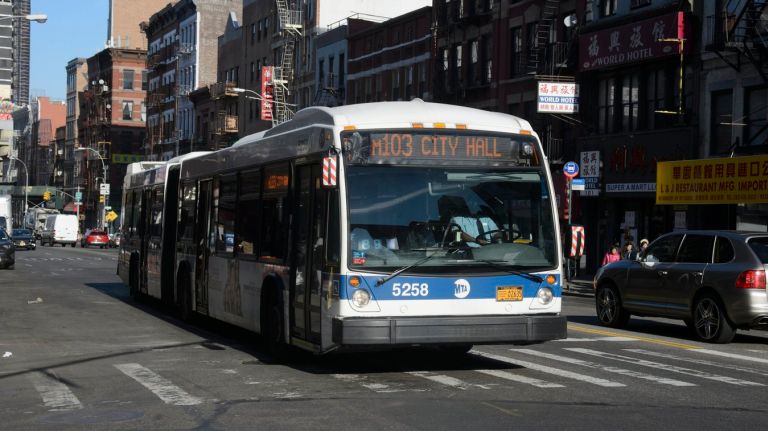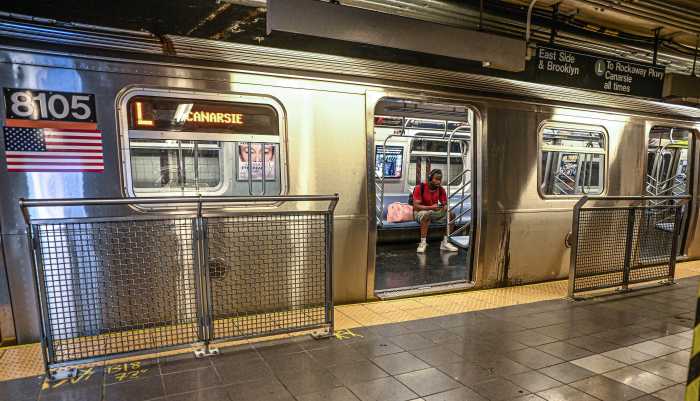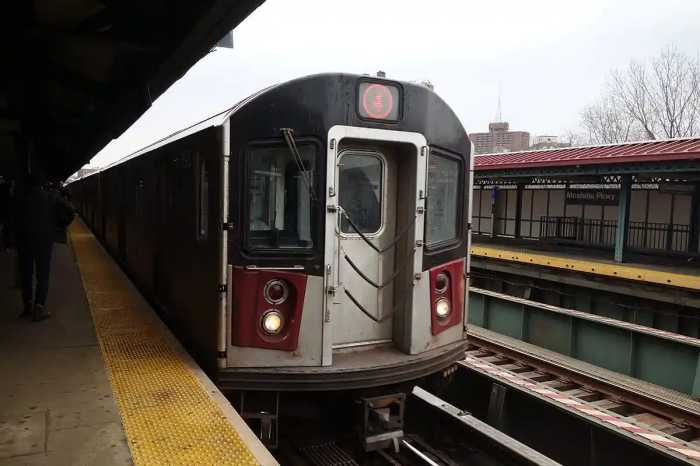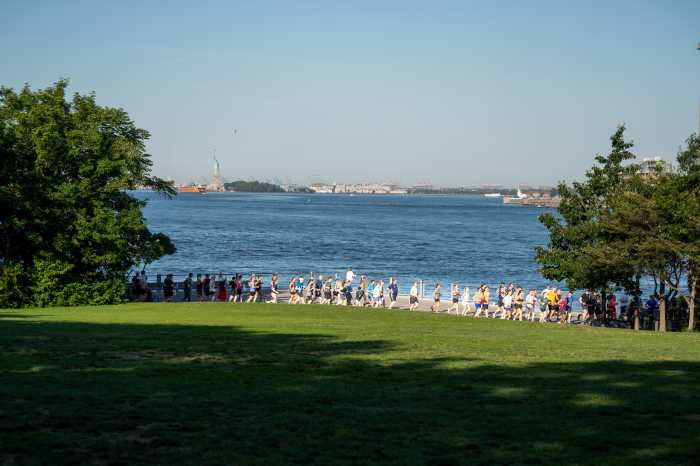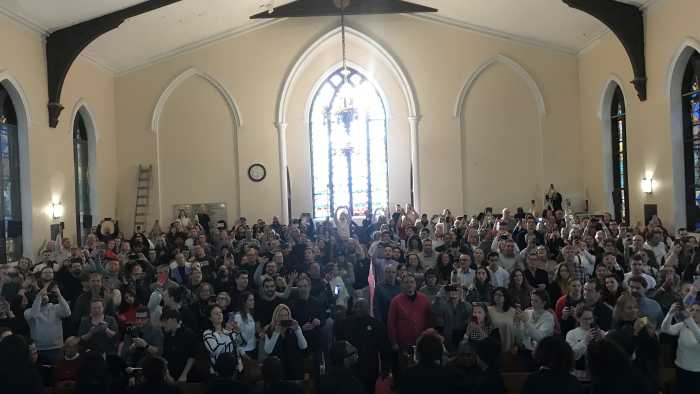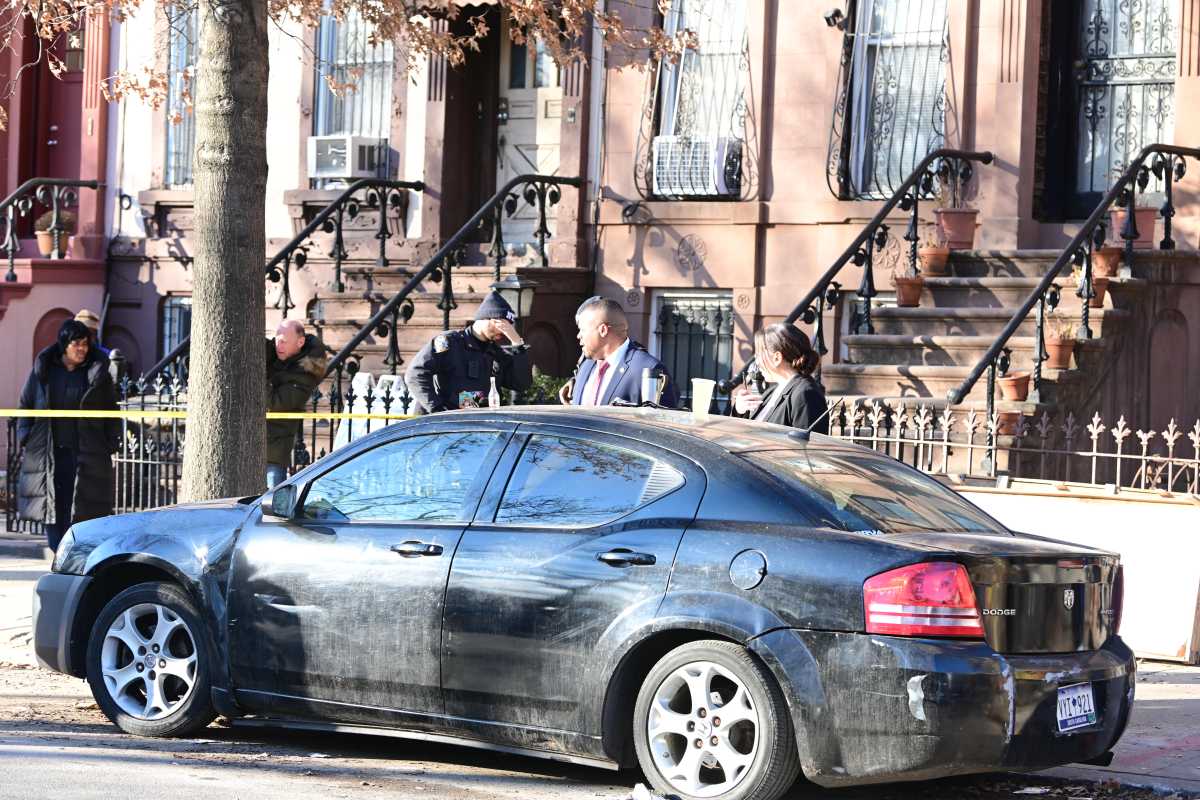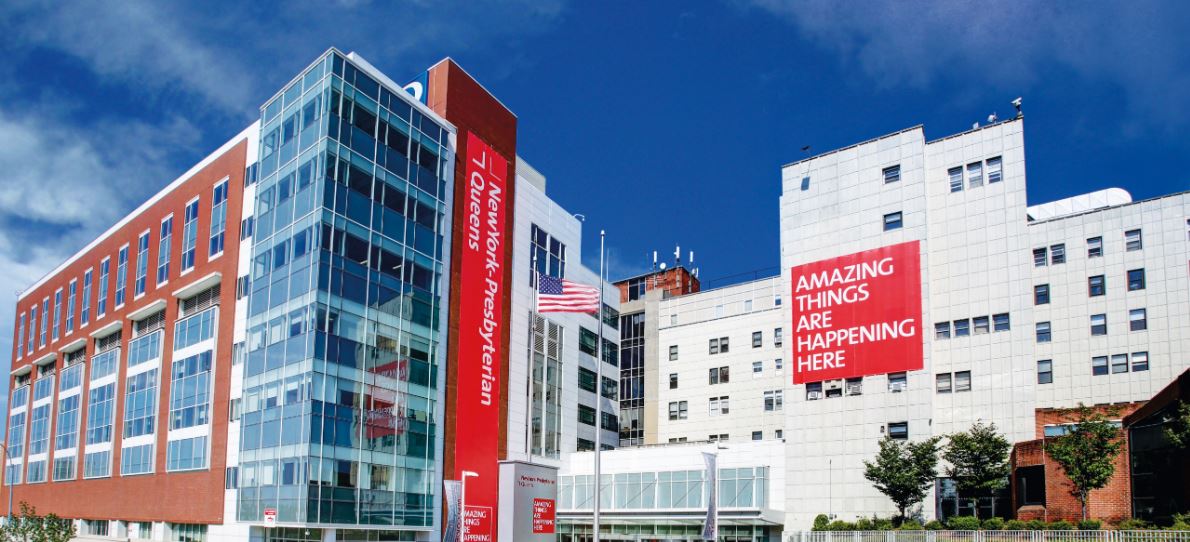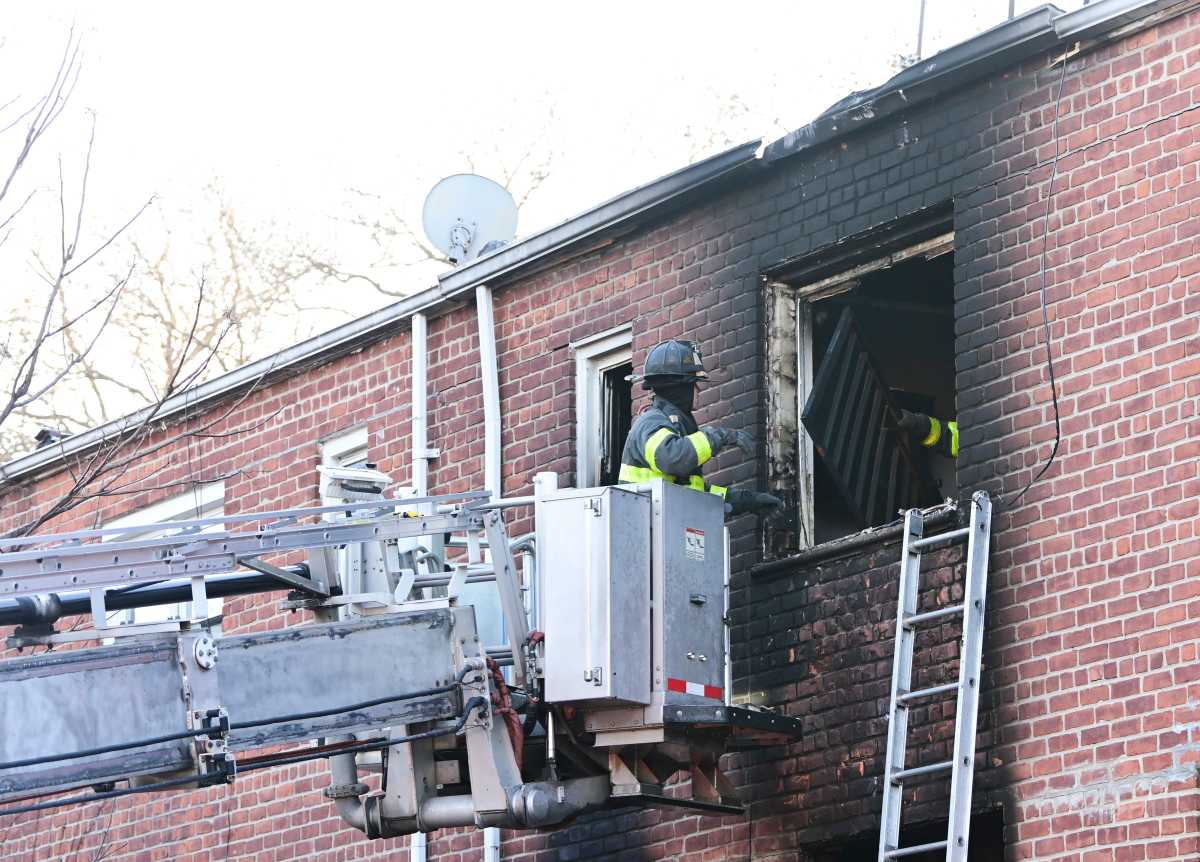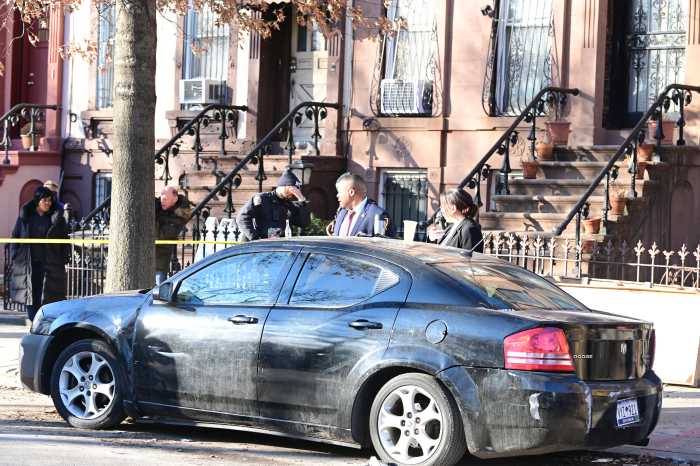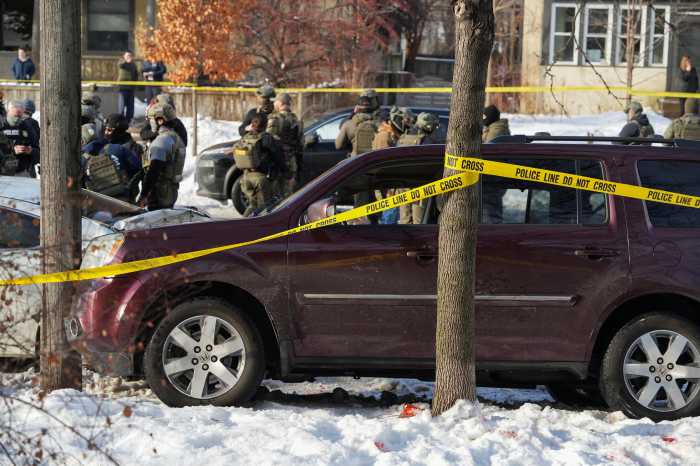
The MTA on Monday will unveil a Bus Action Plan to improve service that includes sweeping measures geared toward the reliability, speed and modernization of a network that has shed ridership in recent years.
The plan, described by NYC Transit President Andy Byford as an outline to “reinvent and re-imagine” service, calls for a re-evaluation of the designs of every bus route; all-door bus boarding; more dedicated space for buses on city streets and better traffic enforcement of that space to keep buses moving.
These are among many other initiatives to be completed over the short, medium and long term.
It’s the first of several action plans to be released by Byford to shape his overarching corporate plan due within his first 100 days on the job, which he will hit in June.
Close to 2.5 million commuters rely on the MTA’s network of more than 300 local and express bus routes. But bus speeds average about 8 mph, around the slowest among systems in major American cities, likely because buses spend half the time either idling at red lights or at stops.
With the emergence of ride-hailing services like Uber and Lyft and Citi Bike, bus ridership has dropped by 14 percent since 2007. Manhattan routes saw the biggest ridership drop since then, by 32 percent.
“We’re releasing the bus plan first because it seems to me getting people back on the buses and understanding why they stopped riding the buses in some cases is particularly important and particularly pressing,” Byford said.
Byford’s plan offers 28 distinct improvements, filtered into seven categories:
- Create a modern network
- Expand bus priority
- Require effective traffic enforcement
- Speed up boarding
- Improve customer experience
- Provide proactive service management
- Enhance our world-class fleet
“If we don’t address this issue and more people abandon the buses, that’s going to mean yet more cars on the road, which will hold up to an even greater extent those buses that are still operating,” Byford said. “That makes them less attractive, so that less people use them and you get into this downward spiral. It’s just inherently a more efficient use of roads; it’s better for the environment and our buses are accessible.”
To modernize the bus network, the MTA will review every route’s path against demographic changes and travel demand. The authority will also expand off-peak service on “strategic” routes, according to the plan.
“The whole goal here is to provide better connectivity and more direct service in every neighborhood,” Craig Cipriano, the executive vice president for MTA Bus, said. “If you take a look at the existing network, a lot of it still looks very similar to the old streetcars that operated way back … the time has come to take sort of a clean-sheet approach based on those factors.”
The MTA will also set a goal to move to a zero-emissions bus fleet and roll out more onboard screens with stop and service information.
The authority will explore opportunities with the DOT to implement more dedicated bus space around congested streets — similar to the changes that have been brought to areas like the Fulton Mall in Downtown Brooklyn and 161st Street, east of Yankee Stadium, Cipriano said.
To enforce lanes not physically separated from traffic, the MTA will ask state lawmakers for more front-facing bus lane cameras and the NYPD for more enforcement. It will recommend creating “dedicated transit-priority traffic teams” to keep police cars from idling or double parking in bus lanes.
To cut down on boarding times, the MTA will rely primarily on its new fare payment system arriving in the spring of 2019. With the new tech, commuters will be able to pass through subway turnstiles or board buses by tapping a smartcard, mobile phone or debit card on a contactless scanner.
The MTA plans by the end of 2020 to have retrofitted access points at the front and back doors of all its buses with scanners to cut down on the time buses spend at stops. At the same time, the MTA wants to expand fare enforcement to make sure the new system doesn’t bring more fare evasion. It will also explore moving to a completely cashless fare system, inspired by other cities like London.
Using new passenger counters, the MTA will launch a pilot this year on Staten Island express routes to offer real-time boarding information with precise seat availability. Those counters will eventually be expanded to all express routes and local routes — though on local routes the tech will only provide general bus crowding information. The MTA will also test a double-decker bus on a Staten Island express route in the coming months as a way to expand capacity.
The MTA plans to redesign its borough bus maps, breaking down routes by neighborhood with information on route frequency as a way to make the network more digestible.
Byford said the MTA’s plan was influenced by City Comptroller Scott Stringer, who last fall released a report detailing bus service as “the other transit crisis” in the city, and by the nearly two years of advocacy from the Bus Turnaround Coalition, a collection of groups who felt the bus system had been neglected, stranding some of the city’s most vulnerable commuters.
“Riders have seen a steady decline in service in terms of reliability and frequency over the last few last years due to a lack of priority from the MTA and the Department of Transportation, making it really difficult for people of lower incomes, seniors and people with disabilities who don’t have access to reliable public transportation,” said Stephanie Burgos-Veras, senior organizer at Riders Alliance, one of the Bus Turnaround groups, who supported the plan.
Other advocacy groups in the coalition, including TransitCenter, Tri-State Transportation Campaign and the NYPIRG Straphangers Campaign were also impressed. They’re now looking toward the city and lawmakers for support.
“We think this is the ambitious plan that the bus system and bus riders in New York need and we think this deserves really strong support from elected officials and New Yorkers themselves,” said Jon Orcutt, the spokesman at TransitCenter. “All of it is going to be challenging — but all of it is doable with strong leadership and that’s what we’re seeing at the MTA. The big question mark is the city and Mayor [Bill] de Blasio. The mayor hasn’t shown a strong feel for the bus system, or its riders, and we need that to change.”
The city’s DOT declined to comment, but Byford said he had met with the department to discuss the plan and that the department “liked what they heard.” Byford plans to pin a target date for each improvement the MTA can control and will add target dates to initiatives that require city or state lawmaker support once the outside parties sign on.
“We have to break down the silos of government — the MTA working with the DOT, with the NYPD, with other agencies — to really re-create a bus system in need of serious change,” said Comptroller Stringer.
Peter Ajemian, a spokesman for Gov. Andrew M. Cuomo, who controls the MTA, said in a statement that the governor “fully support[s] President Byford’s aggressive plan” and “look[s] forward to working with the MTA to implement the entire plan so riders can finally get some relief.” Though he noted that much of the plan relies on the city’s cooperation.
Byford assured that he can be held accountable as the MTA begins carrying out measures.
“Before anyone says, ‘Oh, it’s another study, or another pilot, or we’re working on this’ — no. This will contain tangible actions, over the short-, medium- and long-term to which we’ll be held publicly accountable and we’ll report against those actions,” Byford said. “That’s transparency and accountability in action.”



